Kettle’s Yard: A Tour Through Cambridge’s Modern Art Gallery
Kettle’s Yard, a somewhat modest home in the middle of Cambridge, UK, harbors an impressive art collection of predominantly modern and abstract...
Ruxi Rusu 24 June 2024
Have you heard of Ledger Art? Not many people have! But take a look and you will discover some of the most exciting and surprising indigenous artworks. These drawings are mainly from the 19th century, by indigenous peoples from America, mainly from the Plains region. It includes tribes such as Cheyenne, Comanche, Kiowa, and the people we will look at more closely here, the Lakota. Ledger Art was made by Plateau and Great Basin artists too. This artistic genre flourished from around the 1860s all the way through to the 1920s.
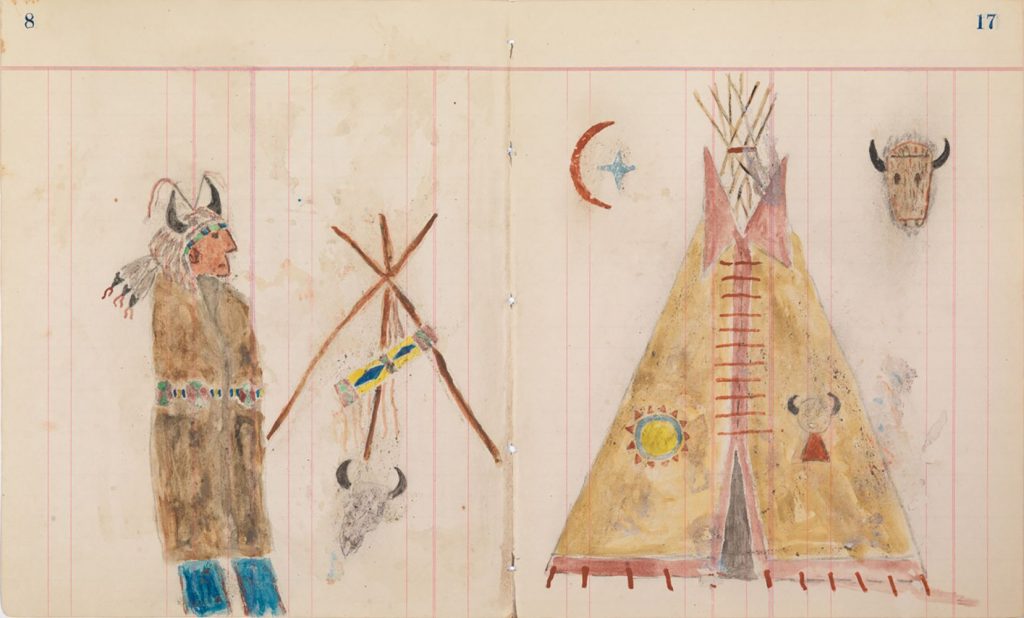
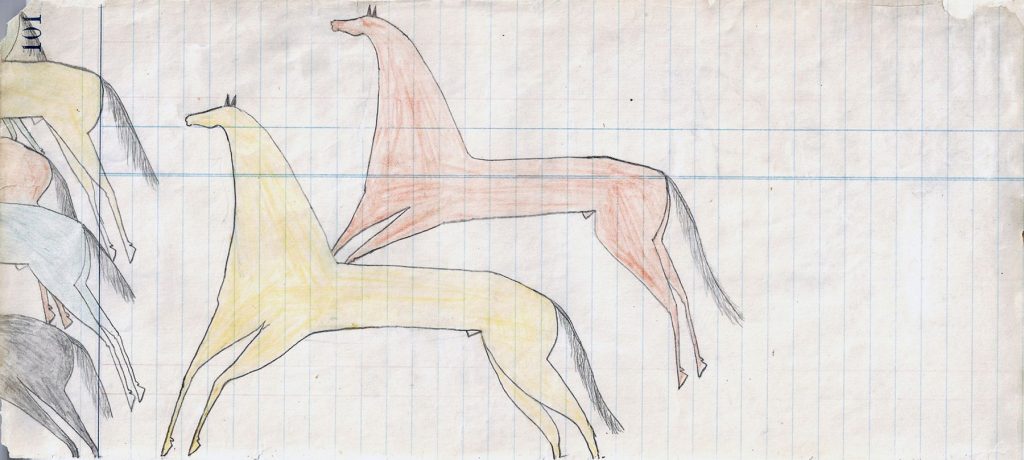
The “ledger” is a lined accounting book and was a common source of paper for Native American artists. Traders, store-keepers, missionaries, and government workers all carried these small, sketchbook-sized record books with them in their journeys across America. Paper may have been a symbol of an invasive culture, but tribal peoples quickly took advantage of this ready access to paper, pencils, paints, and ink. They used these new tools to expand and experiment with their art, transitioning to a completely new form.
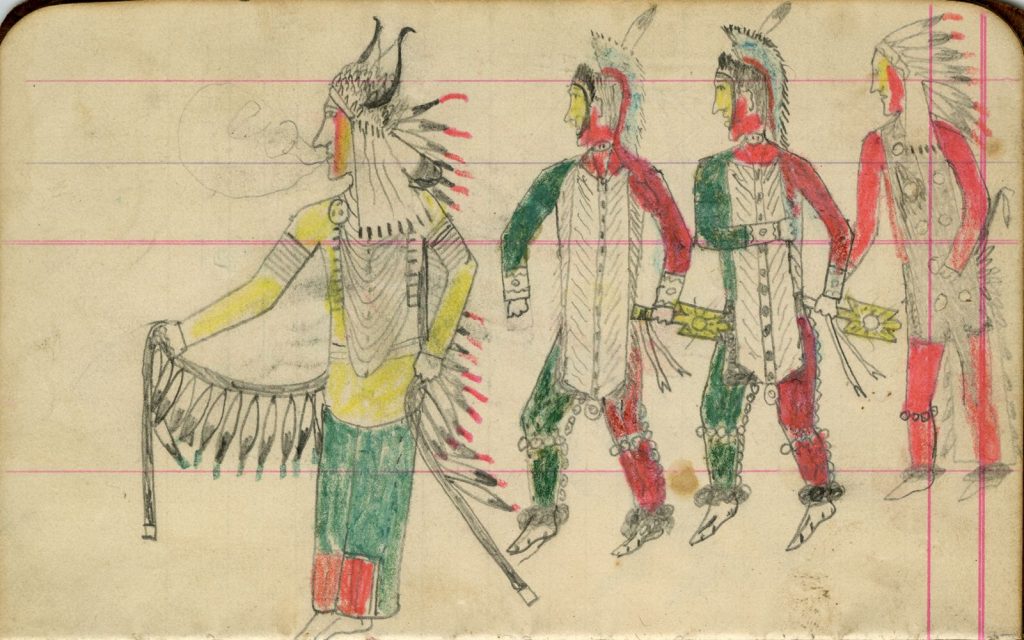
Poignant and evocative, these ledgers are rich in detail and steeped in history. A complete ledger was like a modern-day blog or a social media scroll, showing us in great detail the lives, preoccupations, and dreams of a people. Here is a first-person snapshot of a life long gone. A testimony of lives full of energy and spirit in the last days of the American frontier. They are a counter-narrative to the accepted history of “How The West Was Won”, and we must treasure and preserve them.
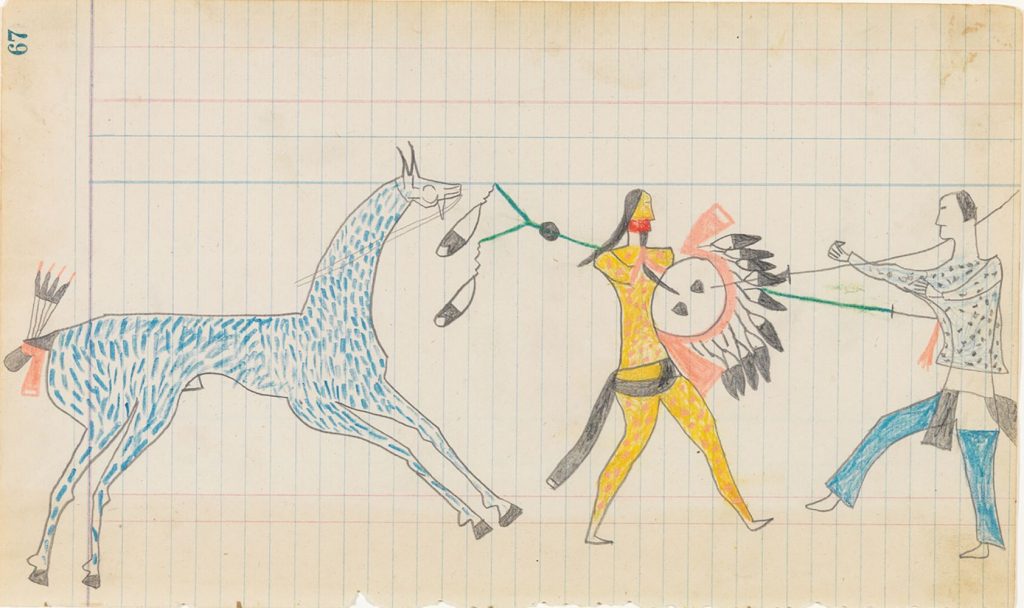
When we talk about native or indigenous art we often think of rock art. In fact the oldest know petroglyphs and pictographs in North America were made by the Great Basin peoples and can still be seen in Nine Mile Canyon in the state of Utah. Known as ‘the world’s longest art gallery’, 64km of the canyon are covered in tens of thousands of images created by the Fremont and Ute people. Some are over 1,000 years old.
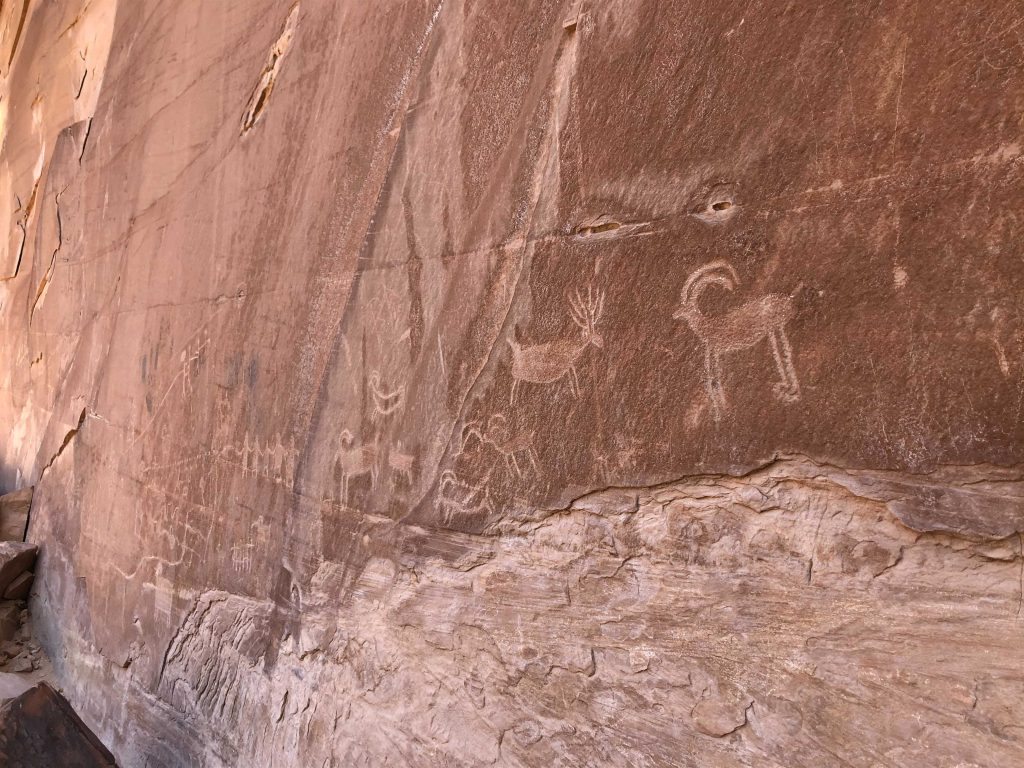
Artistic expression among indigenous peoples in America covers just about every art form you can mention – painting on bark, hides, and skins; wood and bone carving; masks; totem poles; sand painting; weaving; beading; jewelry, and pottery. Ledger Art is a continuation of long-established Indigenous pictographic traditions, but using pencil and watercolor paint on paper.
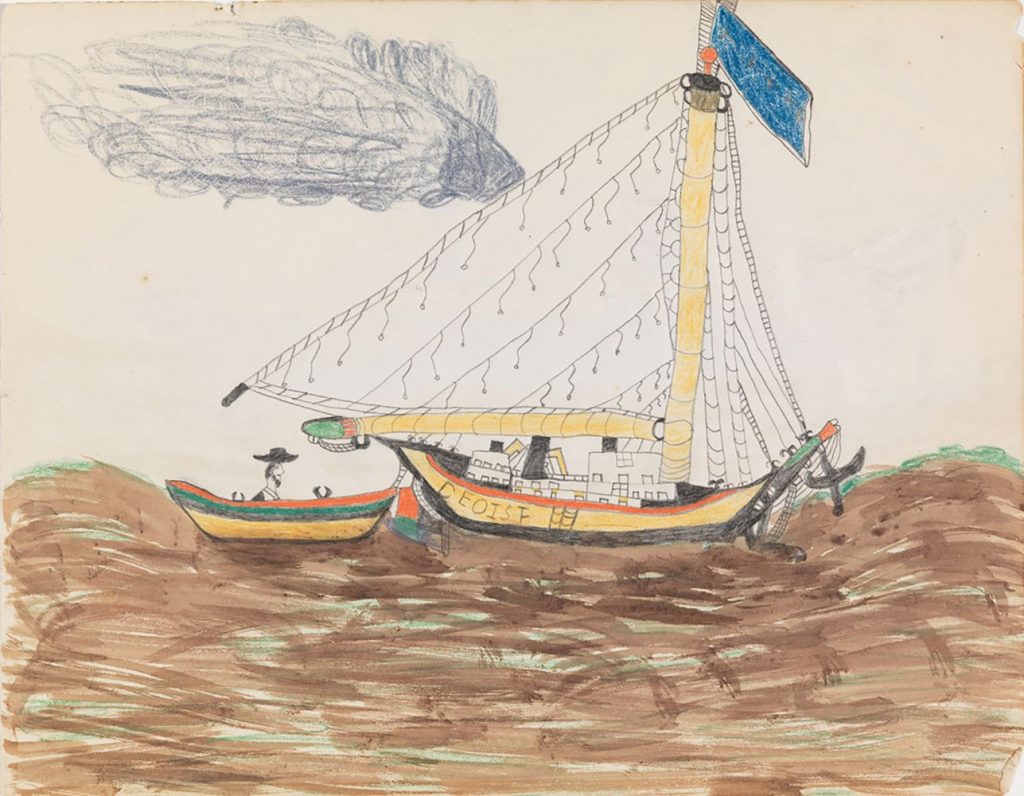
Painting on animal skins and hides was a vital part of the Native American tradition. This art was a way to record and announce legends and events of significance to the people. They depict battle, ceremony, hunting, and courtship. However, the decimation of the buffalo herds in America, part of a concerted campaign to wipe out Native Americans, meant that hide was in short supply. Thus the Plains artists turned to canvas and paper.
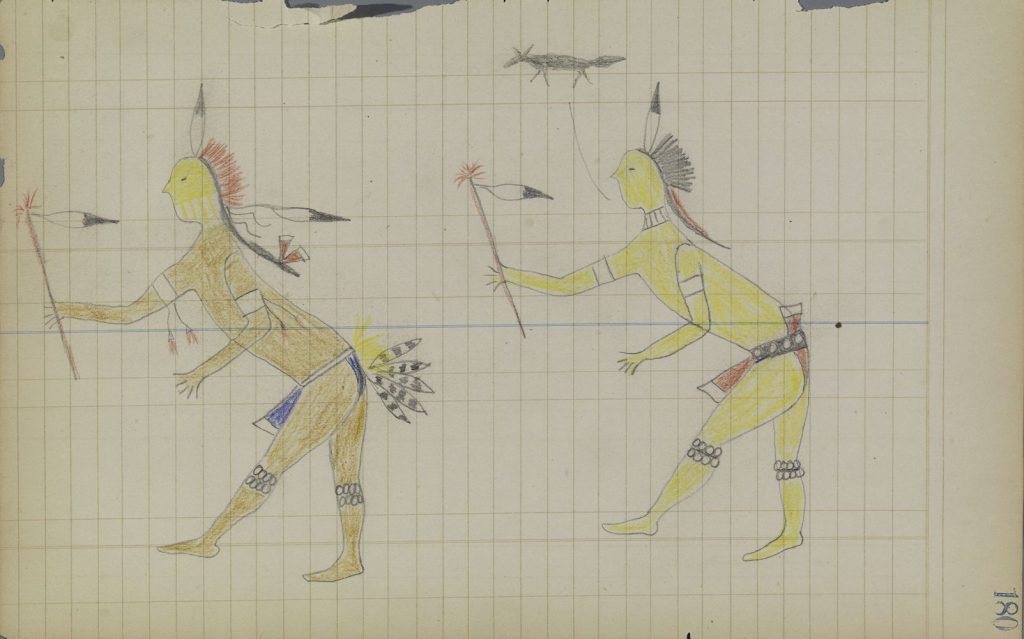
These ledgers show us a moment in art history. Over the top of a dull line of numbers recording trading prices and stocks, we might now see a horse at full gallop over the landscape, or a young warrior in gorgeously decorated leggings. Positive appropriation and recycling at its most magical and energetic!
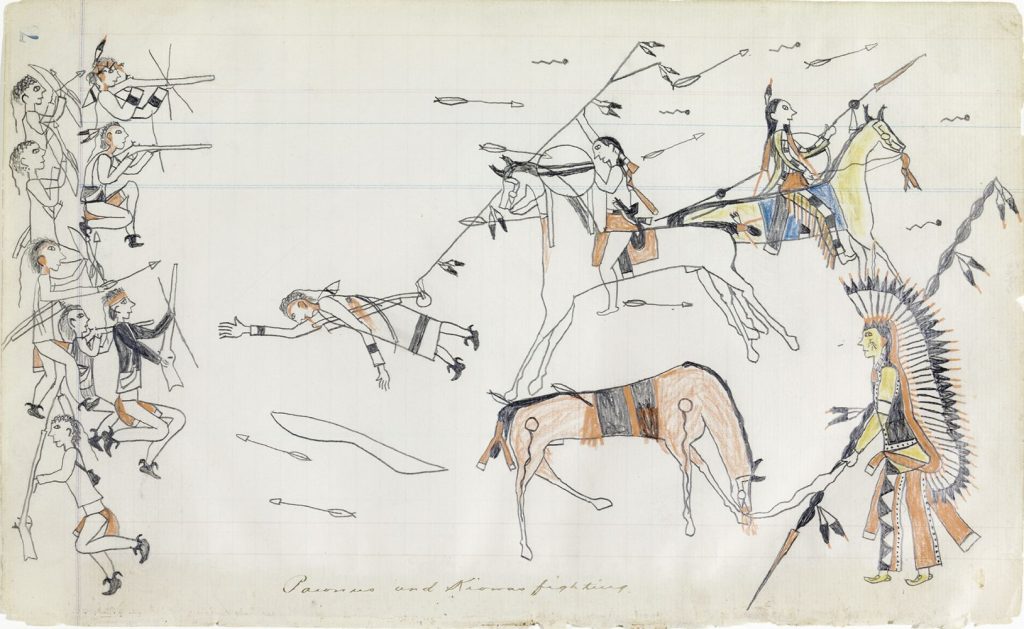
Native American art is a narrative record of tribal activity and women played an important role within Plains culture. Roles were defined, but complementary. It was women who owned the family’s home and most of its contents. They could make an unkind husband homeless by throwing his few belongings out of the tepee! Plains women tended to draw geometrical designs, such as on parfleches – decorated rawhide containers. They also painted on clothing, teepees, and drums. Warriors tended to paint representational designs – people and animals in scenes celebrating battles and hunting scenes.
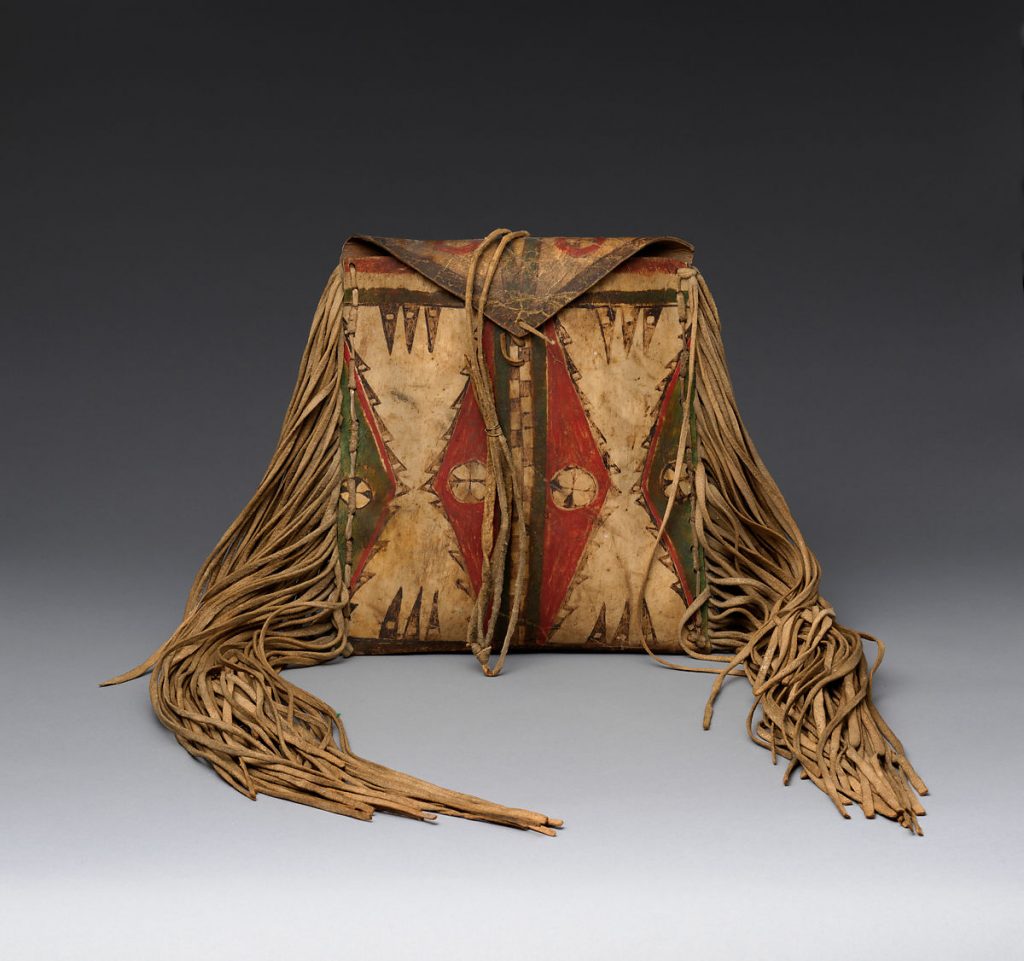
The style is quite unusual to a Western or European eye. This is a different kind of visual literacy. You have to let the intense economy of the images tell you their story. They are spatial as well as temporal. Lean into these small, portable images and look closely. Perspective is irrelevant, unnecessary background detail is eliminated, and facial features are minimal – we are meant to focus in on the all-important action. The other important difference was authorship. The creation of a ledger book was often a communal effort. Several artists might work together – the typical artist’s ego was wonderfully absent.
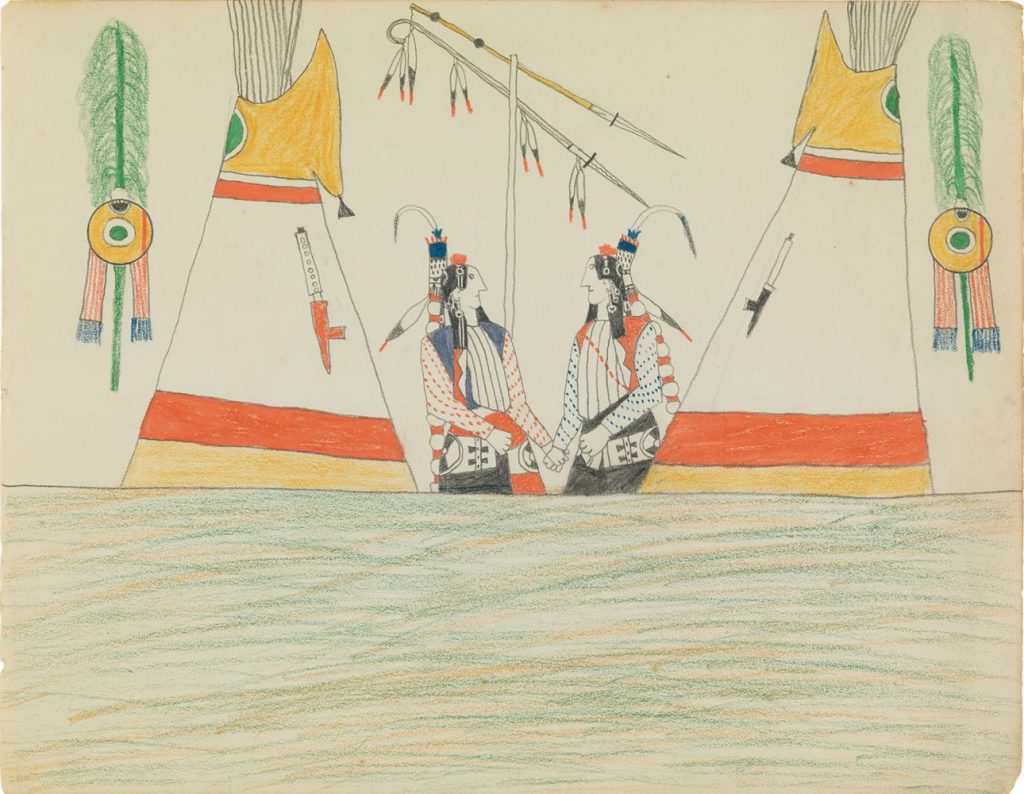
Prominent examples of Ledger Art were created at Fort Marion, in St. Augustine, Florida, where more than 70 southern Plains warriors were imprisoned without trial by the military from 1875 to 1878. By the 1870s Indigenous people in America had been marshaled onto reservations – essentially prisoner camps where they were forced to give up their nomadic lifestyles and live in abject poverty.
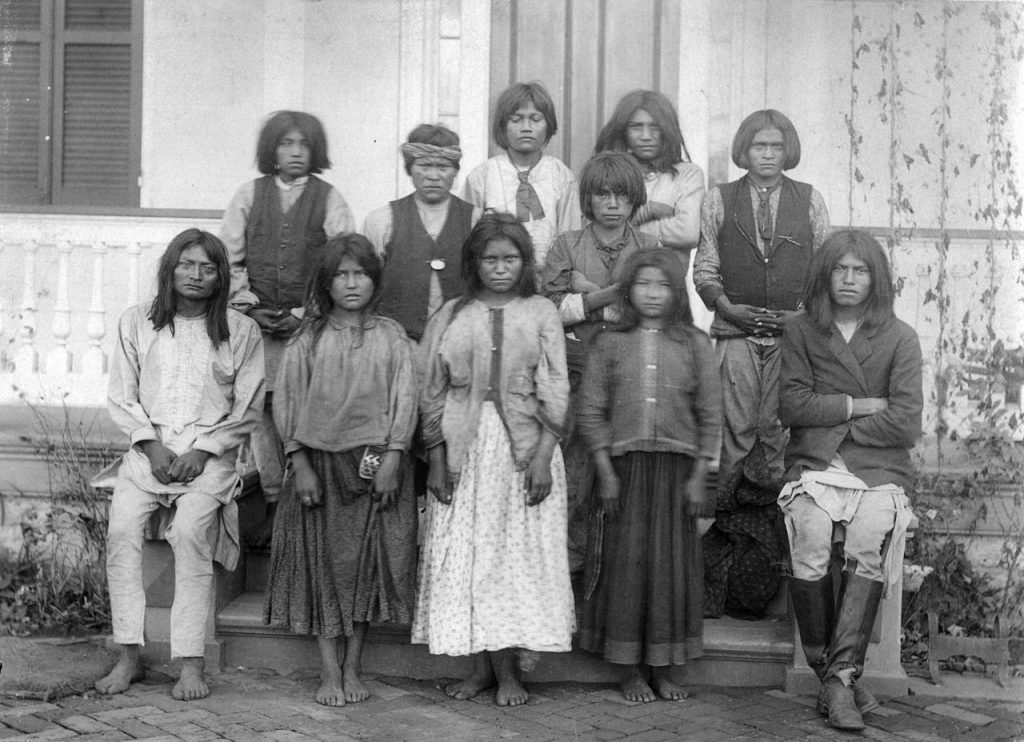
It is sobering to realize that much of this art was made by prisoners of war. Art produced by people who had been pushed off the land of their ancestors by white settlers. Native children were sent off to ‘Indian schools’ where they were brutally stripped of their beliefs, culture, and heritage. Their hair was cut off, their names were taken away. At some, such as the controversial Carlisle Indian Industrial School, some young people were encouraged to continue to paint, so their works could be sold off to wealthy patrons or souvenir-hunting tourists for profit. The school motto was ‘Kill the Indian, Save the Man’. Some of these artists died young of tuberculosis or smallpox, given to them by the white man, intent on ‘civilizing’ them.
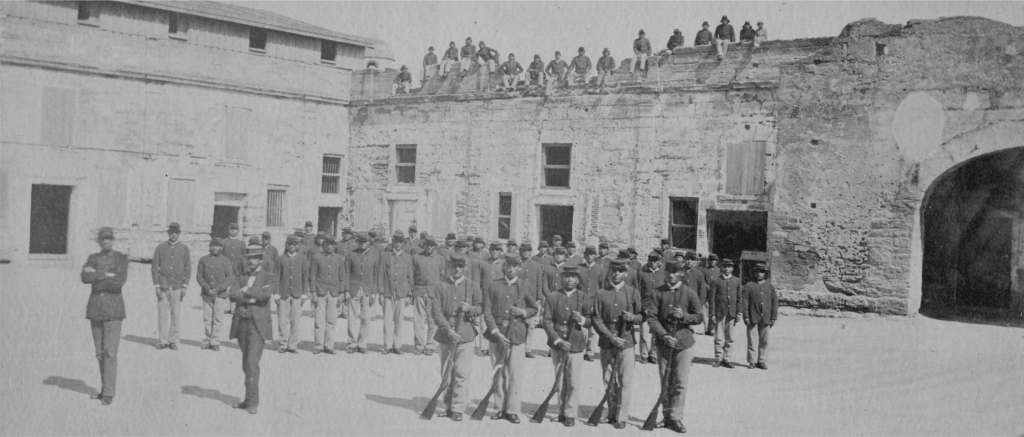
The ledger books were held in great esteem by their artists. In 1878 a young warrior called Little Fingernail is recorded as wearing his ledger book strapped to his body – one of his few possessions. He refused to sell the book to an army officer. However, Little Fingernail did eventually lose his precious book when he was killed by army forces in Montana. The bullets that tore through his young body also tore through his ledger. The book was seized by army officers as a war trophy, and it now sits in the New York Natural History Museum.
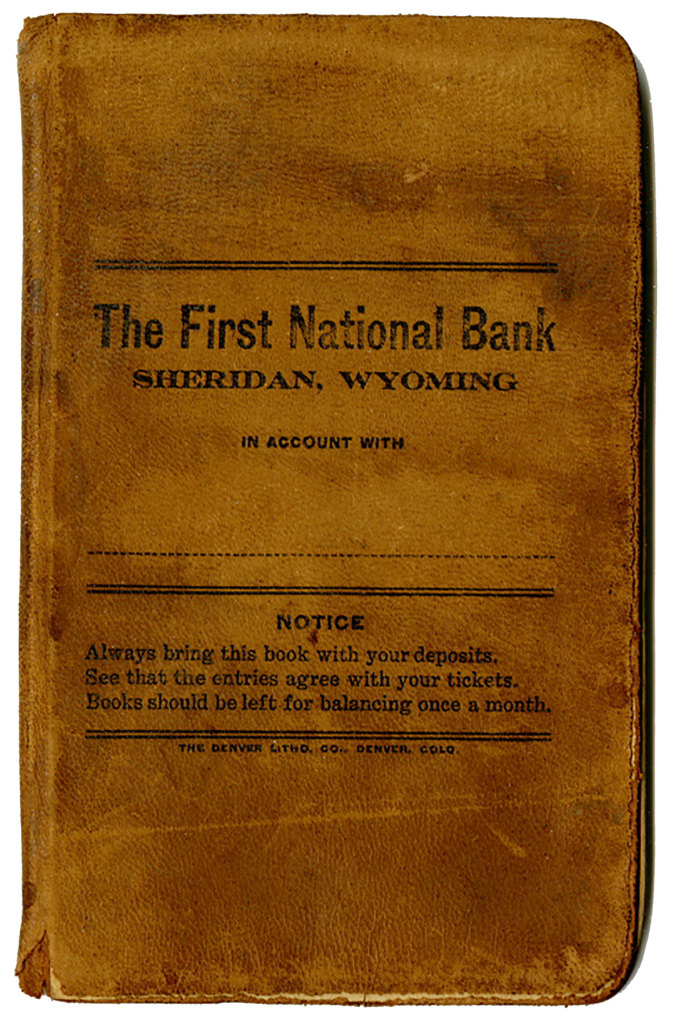
In the 20th century, in a further insult to Native Americans, many ledger books were taken apart, and individual paintings were sold on to collectors and commercial galleries. The narrative order of the sacred stories was lost, and the integrity of the artists’ vision was shattered. Imagine tearing apart a bible, or a Shakespearean first folio, and scattering the pages to the highest bidder.
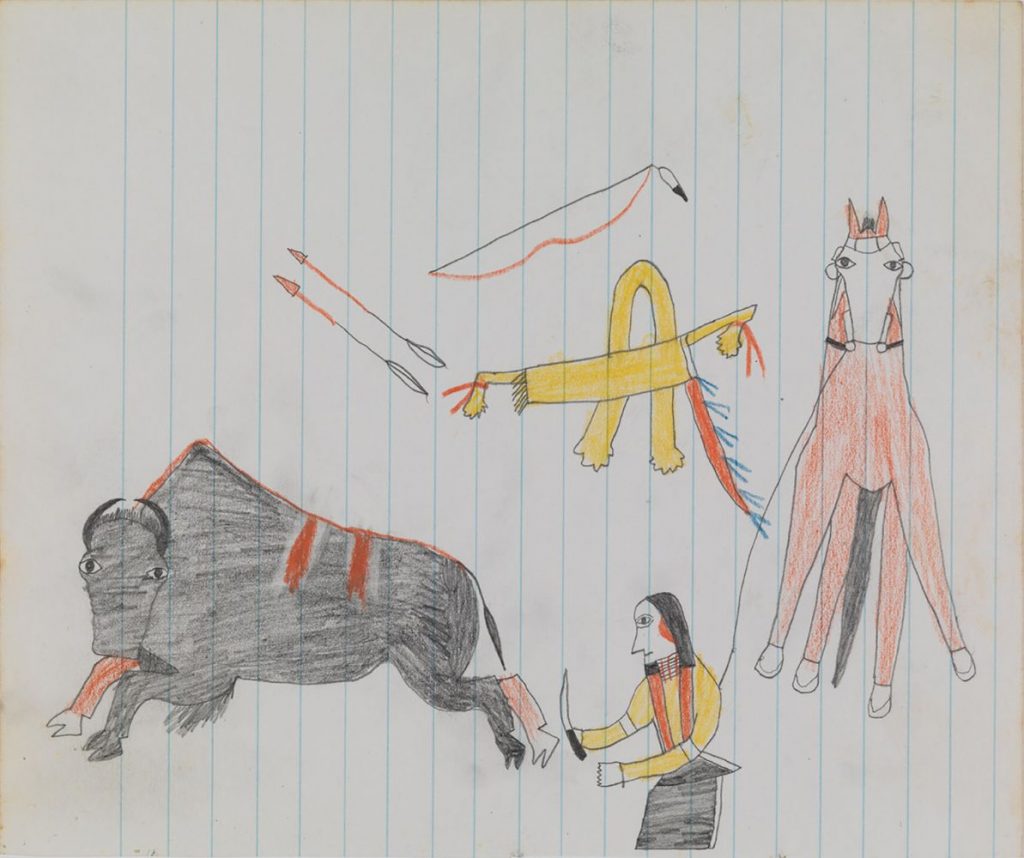
The brutal colonization of the Americas is an indelible stain on the history of the world. Suppression of Native American culture was widespread. Tribal independence and sovereignty were crushed. Do not doubt, this was a genocide. Re-claiming and celebrating the ledgers is a step in the direction of re-establishing spiritual identity and personal perspectives. These ledgers are historical records, pictures, stories, maps, and memories, blending art and history into one package.
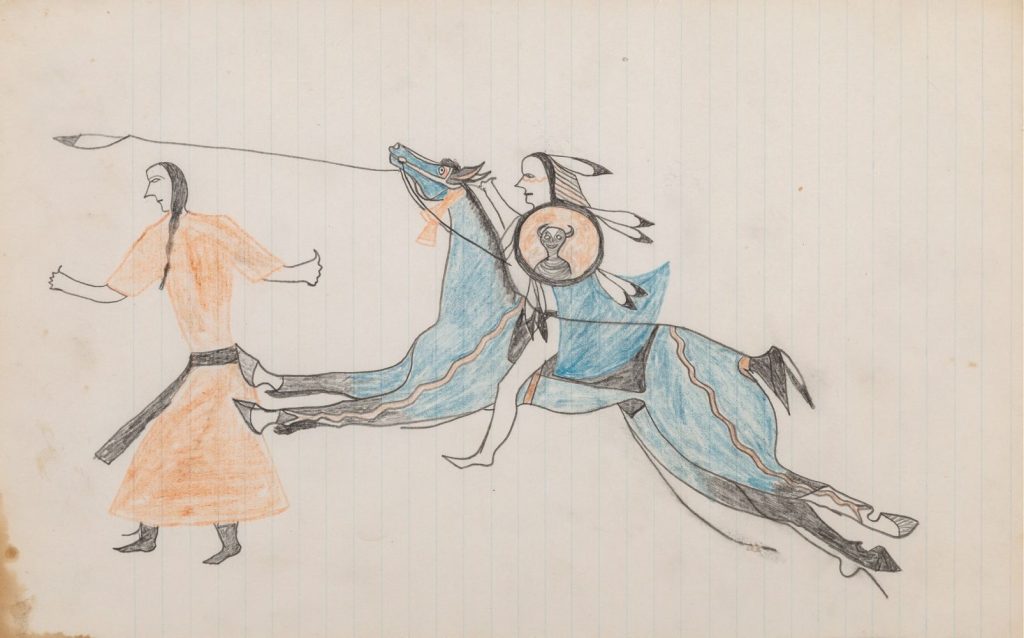
The National Anthropological Archive at the Smithsonian has around 2,000 individual items of Ledger art, possibly the largest collection in the world. Individual images can be worth tens of thousands of dollars. Other public collections can be found at The National Museum of the American Indian in New York, The Milwaukee Public Museum, The Hood Museum of Art, and at PILA (Plains Indian Ledger Art Digital Publishing Project).
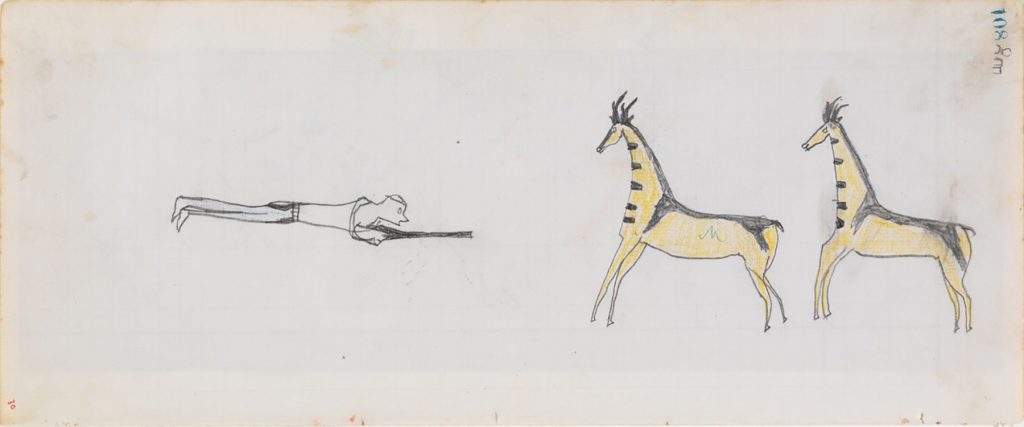
Lakota artist, filmmaker, and performance artist Dana Claxton in 2021 curated an online exhibition of historical Lakota Ledger Art called Fast Ponies and War Bonnets. The works are drawn from the holdings of the Donald Ellis Gallery in New York, the internationally pre-eminent dealer in the field of historical Native American art.
Donald Ellis Gallery has been servicing private collectors, corporations, and museums since 1976. The gallery is committed to broadening the social accessibility of its collection through publishing and co-curating special exhibitions. They have assisted PILA (Plains Indian Ledger Art) in creating a comprehensive archive of complete Ledger books and individual Ledger drawings for public access and research.
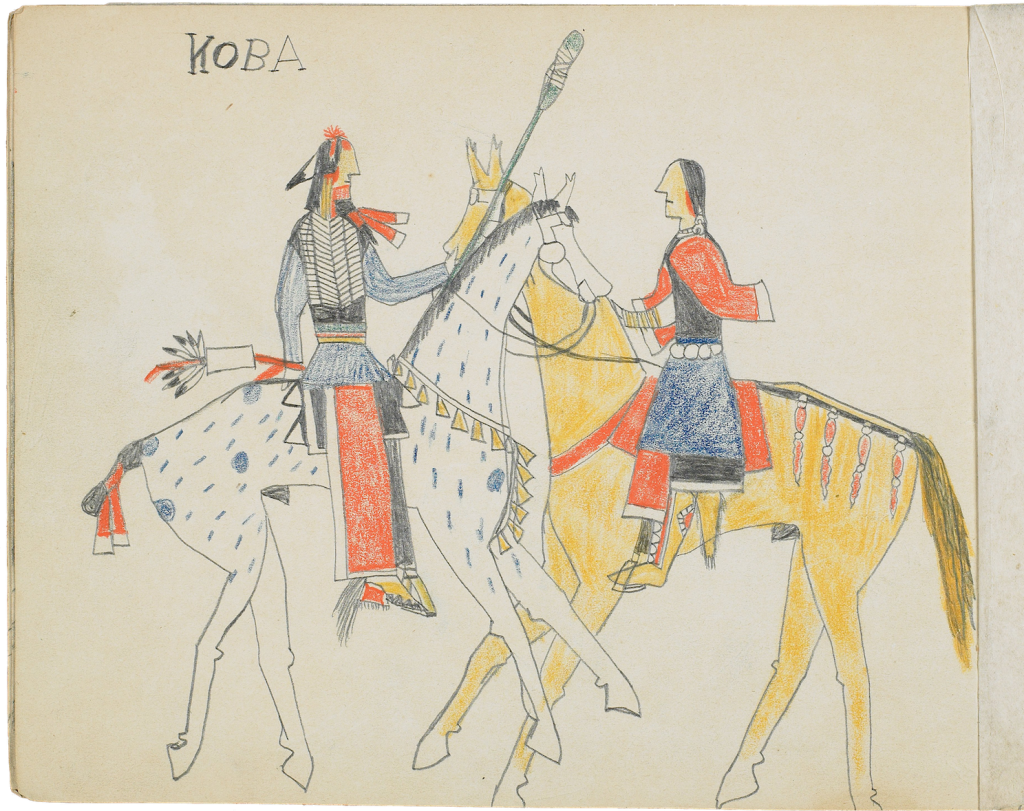
Outsider Art Fair is also helping to promote interest in Ledger Art. They believe that the dominant colonial system has kept these exceptional drawings on the sidelines of the broader art world. With galleries like Donald Ellis, they seek to reposition Plains Indian Ledger drawings as profoundly significant works of American art.
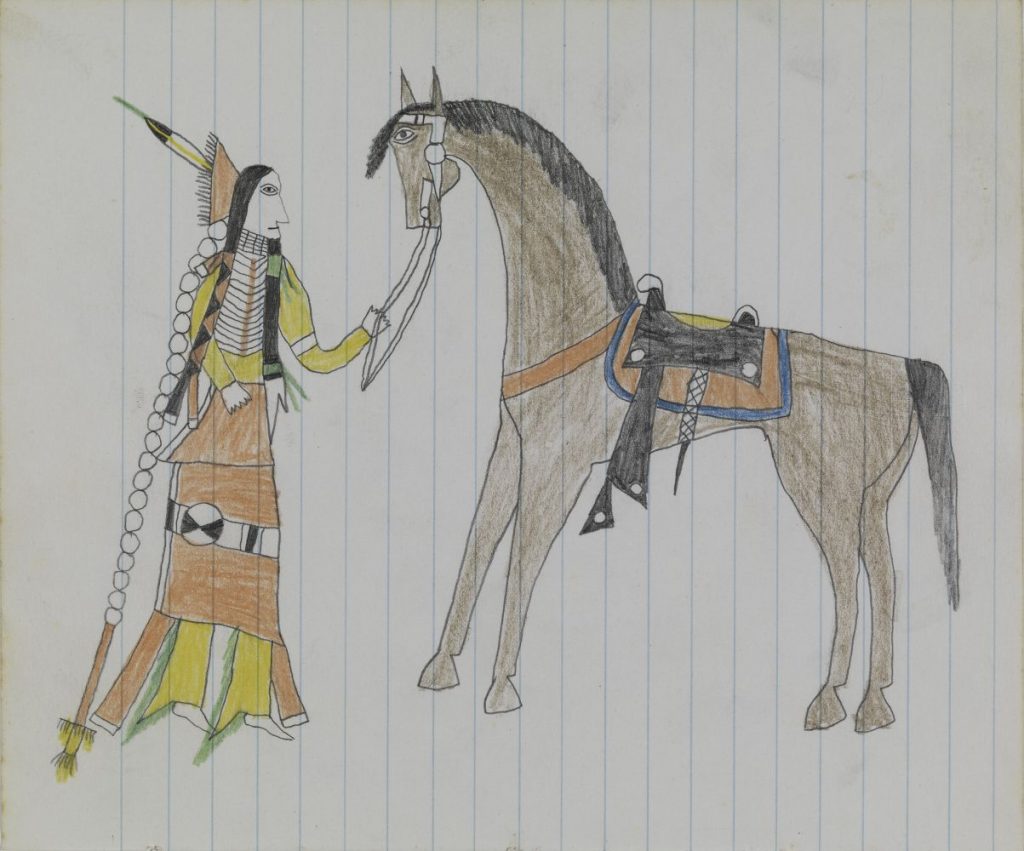
Donald Ellis spoke in the Outsider Art Fair viewing room about the Fast Ponies and War Bonnets exhibition. He said he had been aware of Ledger Art from the start of his career. However, a 1996 exhibition, Plains Indian Drawings, at the Drawing Centre in New York, had changed his life:
“I went 40 or 50 times. I was completely and utterly blown away by the response. I went to watch people look at the drawings because I’d never seen anything like it. I’d never seen such an overwhelming response to art before. After that exhibition I became obsessed with Ledger Drawings.”
Donald Ellis, Outsider Art Fair Viewing Room, virtual walk through, May 2021.
Donald Ellis hopes to take a collection of Ledger artworks on tour across the United States in 2022, exhibiting them within the indigenous communities who first made them. This should prove to be a monumental and emotional experience.
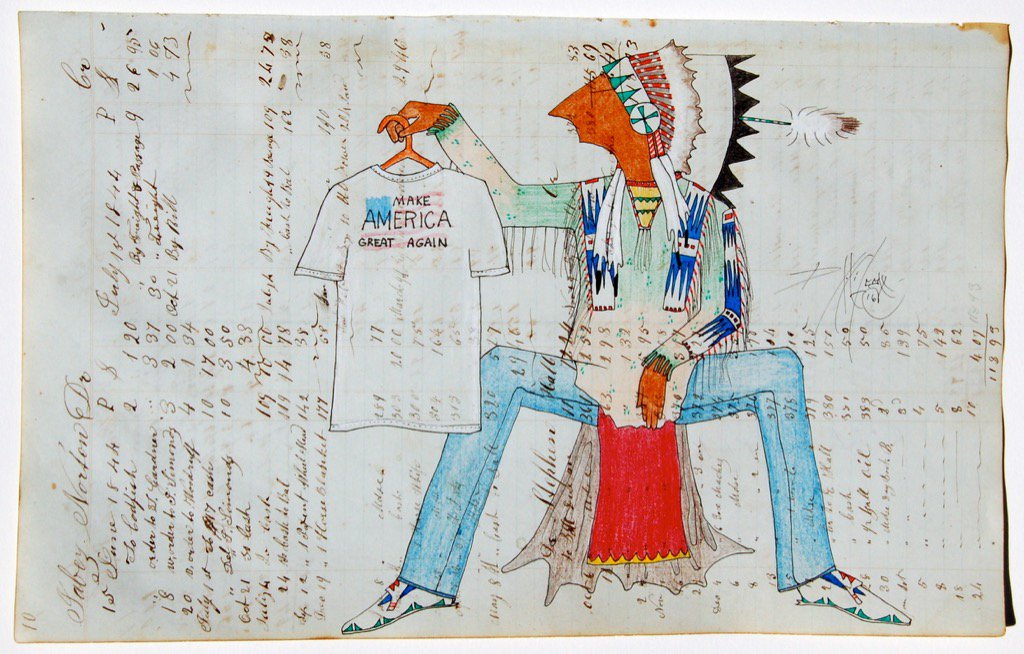
There are artists today who still practice Ledger Art. Some of the names to look out for include Merle Locke, Terrance Guardipee, Donald Montileaux, and Dolores Purdy. They explore the link between their tribal history, the coming of the European settlers, and their lives today.
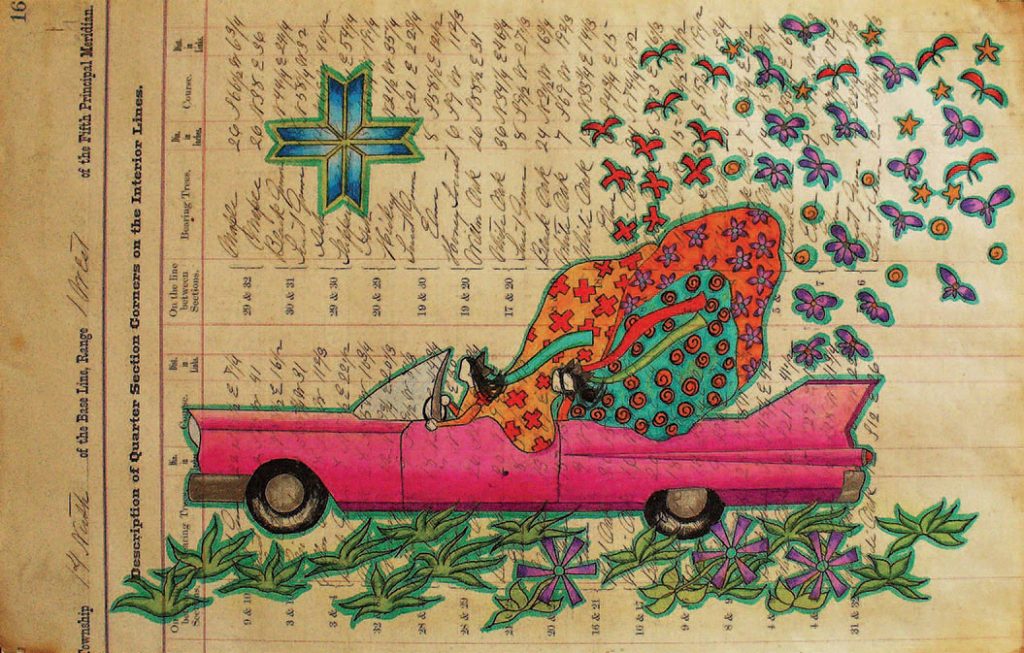
Modern-day artists paint, draw, and collage on antique ledgers, on maps and on sheet music to honor the original ledger artists and to develop the art form in a modern, distinctive way. They continue the conversation of rebellion, resistance, and resilience. As contemporary artist Terrance Guardipee says: ‘my art tells people that we are still here.’
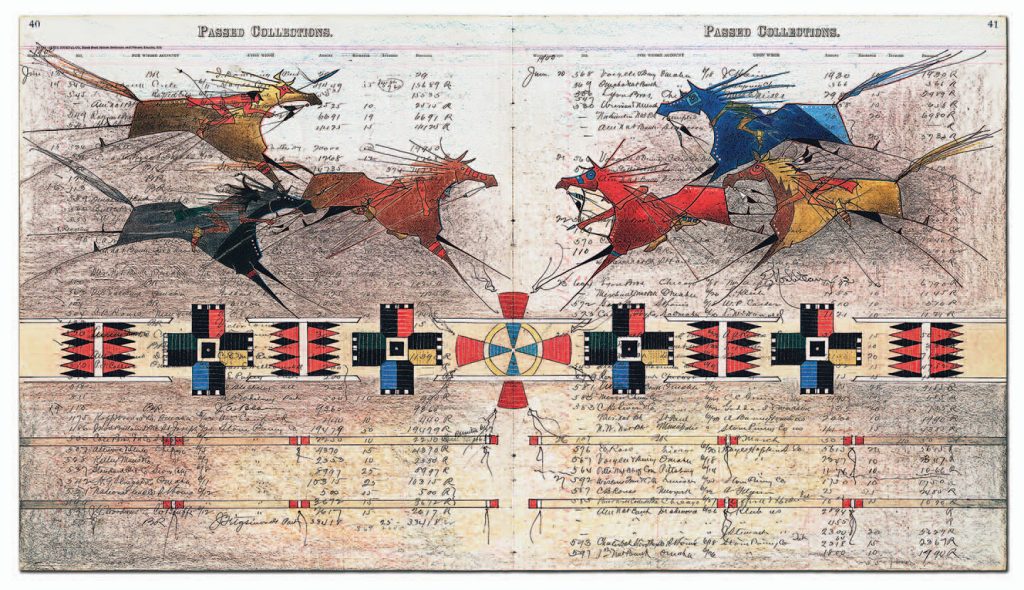
Denise Low, Composite Indigenous Genres: Cheyenne Ledger Art as Literature. Studies in American Indian Literature, Series 2, Vol 18, No 2, Summer 2006, pp. 83-104. University of Nebraska Press.
DailyArt Magazine needs your support. Every contribution, however big or small, is very valuable for our future. Thanks to it, we will be able to sustain and grow the Magazine. Thank you for your help!